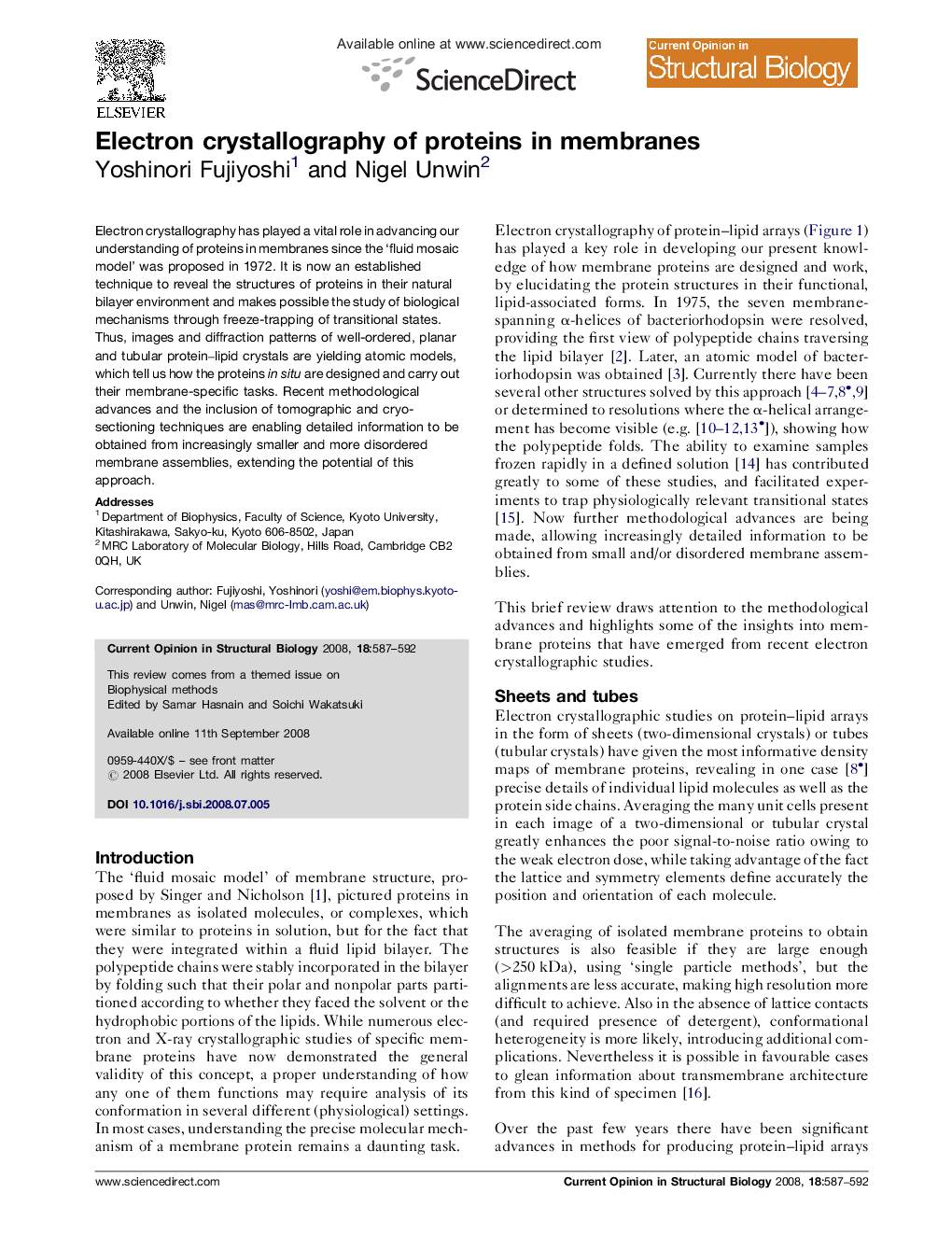| Article ID | Journal | Published Year | Pages | File Type |
|---|---|---|---|---|
| 10822664 | Current Opinion in Structural Biology | 2008 | 6 Pages |
Abstract
Electron crystallography has played a vital role in advancing our understanding of proteins in membranes since the 'fluid mosaic model' was proposed in 1972. It is now an established technique to reveal the structures of proteins in their natural bilayer environment and makes possible the study of biological mechanisms through freeze-trapping of transitional states. Thus, images and diffraction patterns of well-ordered, planar and tubular protein-lipid crystals are yielding atomic models, which tell us how the proteins in situ are designed and carry out their membrane-specific tasks. Recent methodological advances and the inclusion of tomographic and cryo-sectioning techniques are enabling detailed information to be obtained from increasingly smaller and more disordered membrane assemblies, extending the potential of this approach.
Related Topics
Life Sciences
Biochemistry, Genetics and Molecular Biology
Biochemistry
Authors
Yoshinori Fujiyoshi, Nigel Unwin,
